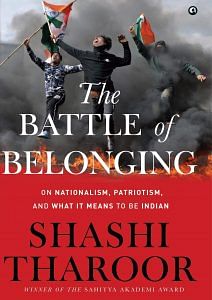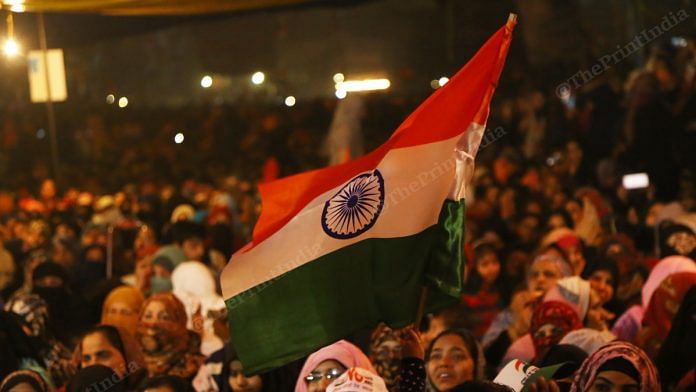The India that was born in 1947 was in a very real sense a new creation: a state that made fellow citizens of the Ladakhi and the Laccadivian for the first time, divided Punjabi from Punjabi for the first time, and asked a Keralite peasant to feel allegiance to a Kashmiri Pandit ruling in Delhi, also for the first time. This is why I felt emboldened to subtitle my 2003 biography of Nehru The Invention of India.
In India: From Midnight to the Millennium, I illustrated what this meant with a simple story. When India celebrated the forty-ninth anniversary of its independence from British rule in 1996, our then prime minister, H. D. Deve Gowda, stood on the ramparts of Delhi’s seventeenth-century Red Fort and delivered the traditional Independence Day address to the nation in Hindi, one of India’s official languages, and its most widely spoken one. Ten other prime ministers had done exactly the same thing forty-eight times before him, but what was unusual this time was that Deve Gowda, a southerner from the state of Karnataka, spoke to the country in a language of which he did not know a word. Tradition and politics required a speech in Hindi, so he gave one—the words having been written out for him in his native Kannada script, in which they, of course, made no sense.
Such an episode is almost inconceivable elsewhere, but it represents the best of the oddities that help make India what it is. It is impossible to conceive of a Frenchman who does not speak French, but India has no equivalent assumption: nearly half the country does not speak or understand Hindi. Only in India could a nation be ruled by a man who did not understand its dominant language; only in India, for that matter, is the principal language one that half the population does not understand; and only in India could this particular solution have been found to enable the prime minister to address his people.
Also read: Congress cannot afford to become BJP-lite, says Shashi Tharoor
Nor was the phenomenon exclusive to one prime minister. I have sat in the row behind the podium in the Red Fort as a junior colleague of Prime Minister Manmohan Singh and observed him turning the pages of his text from right to left, since—born as he was in what is today Pakistan—he had learned Hindustani in the Urdu script, rather than the Devanagari. Deve Gowda reading Hindi in Kannada, Manmohan Singh in Urdu—seeing these practices during the prime ministerial address on Independence Day was a startling affirmation of Indian pluralism.
For, as I have often argued, we are all minorities in India. A typical Indian stepping off a train, say, a Hindi-speaking Hindu male from the Gangetic plain state of Uttar Pradesh (UP), might cherish the illusion that he represents the ‘majority community’, to use an expression much favoured by the less industrious of our journalists. But he, literally, does not. As a Hindi-speaking Hindu he belongs to the faith adhered to by some 80 per cent of the population, but a majority of the country does not speak Hindi; a majority does not hail from Uttar Pradesh; and if he were visiting, say, Kerala, he would discover that a majority there is not even male. Even more tellingly, our archetypal UP Hindi-speaking Hindu has only to mingle with the polyglot, multihued crowds thronging any of India’s major railway stations to realize how much of a minority he really is. Even his Hinduism is no guarantee of majority-hood, because his caste automatically places him in a minority as well: if he is a Brahmin, 90 per cent of his fellow Indians are not; if he is a Yadav, a ‘backward class’, 85 per cent of Indians are not, and so on.
Or take language. As I have stated earlier, the Constitution of India recognizes twenty-two today—our rupee notes proclaim their value in fifteen languages—but, in fact, there are twenty-three major Indian languages (if you include English), and thirty-five which are spoken by more than a million people (and these are languages, with their own scripts, grammatical structures, and cultural assumptions, not just dialects—if we were to count dialects, there are more than 20,000). Each of the native speakers of these languages is in a linguistic minority, for none enjoys majority status in India. Thanks in part to the popularity of Bombay’s Hindi cinema, Hindi is understood, if not always well spoken, by about half the population of India, but it is in no sense the language of the majority; indeed, its locutions, gender rules, and script are unfamiliar to most Indians in the South or Northeast.
Also read: One thing India can teach the West is this — you can be a liberal and a nationalist
Ethnicity further complicates the notion of a majority community. Most of the time, an Indian’s name immediately reveals where he is from, and what his mother tongue is; when we introduce ourselves, we are advertising our origins. Despite some intermarriage at the elite levels in the cities, Indians still largely remain endogamous, and a Bengali is easily distinguished from a Punjabi. The difference this reflects is often more apparent than the elements of commonality. A Karnataka Brahmin shares his Hindu faith with a Bihari Kurmi, but feels little identity with him in respect of appearance, dress, customs, tastes, language, or political objectives. At the same time a Tamil Hindu would feel that he has far more in common with a Tamil Christian or Muslim than with, say, a Haryanvi Jat with whom he formally shares a religion.
Why do I harp on these differences? Only to make the point that Indian nationalism is a rare animal indeed. This land imposes no narrow conformities on its citizens: you can be many things and one thing. You can be a good Muslim, a good Keralite, and a good Indian all at once.
This means that the basis of Indian nationhood is unusual in today’s world. Talking about Indian nationalism reminds me of the probably apocryphal story of two law professors arguing about a problem. When one suggests a practical solution to the dilemma, the other counters: ‘It may work in practice, but will it work in theory?’
Indian nationalism has worked in practice, but it does not stand up very well in theory.
 This excerpt from ‘The Battle of Belonging: On Nationalism, Patriotism, And What It Means To Be Indian’ by Shashi Tharoor has been published with permission from Aleph Book Company.
This excerpt from ‘The Battle of Belonging: On Nationalism, Patriotism, And What It Means To Be Indian’ by Shashi Tharoor has been published with permission from Aleph Book Company.







tharoor is wonderful human being…he sees no difference in people and nations…unity brings peace and social development…
Brilliant ! Made me want to buy Shashi Tharoor’s book